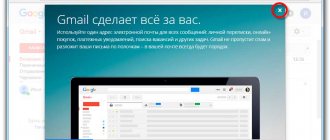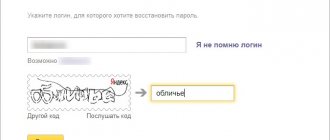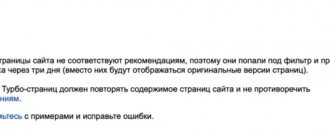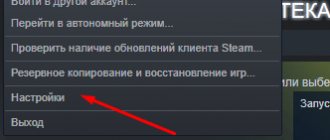What is email marketing?
Email marketing is the mass sending of letters by email. These could be messages about promotions, sales, new products. It can also be educational materials: news, articles, webinars.
It's something like a newspaper, only on the Internet. By subscribing, you will receive occasional episodes in your email.
Newsletters are on different topics:
- Discounts, promotions, sales
- Cooking recipes
- News
- Exchange rates
- and much more
Subscribe to RSS
Many bloggers, information portals, and so on, install a widget with such a newsletter and invite their readers to subscribe to the news feed in order to receive interesting news faster than others.
But what to do if the information from these resources bothers you? The answer is simple - another letter will arrive in your mailbox and your action will consist of simply clicking on the “Unsubscribe now” button. The point is almost the same as with mailings from smartresponder - nothing complicated, I won’t even attach a screenshot, especially since I’m not subscribed to any feed.
That's basically it. I think it’s clear to you how to unsubscribe from the mailing list?
How to subscribe to the newsletter
Newsletters are letters with information that are sent to a certain number of users at the same time.
As a rule, such messages arrive because the user himself has expressed a desire to receive them. It happens like this: you will be taken to a site with interesting information and it has a subscription form. For example, like this:
The site promises that it will send new materials directly to your email.
You enter your mailbox address and confirm it. To do this, you need to go to your mail, open the activation letter and follow the link in it.
Then the mailbox address is added to the list of site subscribers. And when new material is released, it will be sent to all addresses on this list, including your email.
It happens differently. For example, the site offers to send a book or video course for free. You indicate your mailbox and actually receive the promised gift. But at the same time, your address is included in the list of site subscribers.
Email overload
While working in the information business and teaching people, I came across the phenomenon of my students’ mailboxes being overloaded. Sometimes a person shows you his mail, and there are thousands of unopened letters, not to mention the fact that the owner of the mail clearly did not intend to open and read them. Why is this situation happening? Every day we receive a large number of letters in our inbox offering some information products or earning systems.
Suppose we liked something, we enter our e-mail address, automatically follow the link, confirming our subscription, and receive the material we liked by email. Everything is fine. But we just wanted to get a specific article or book, and that’s all. And since we confirmed our subscription, a stream of letters from this author begins to arrive in our mailbox. And thus, a huge number of letters accumulate that we did not plan to receive at all. And when I asked the question why you don’t unsubscribe from this mailing list, since it doesn’t interest you, it turned out that many users simply do not know how to unsubscribe from mailing lists.
In this regard, let's look at specific situations for Yandex and Mail. Currently, these two email services are very relevant and in demand. There was already an article on the blog “How to unsubscribe from subscriptions and junk mail” from unscrupulous authors on Gmail, you can read this article.
What is spam
It often happens that the user has not subscribed anywhere, but he still receives newsletters. Usually these are various types of advertising and fraudulent offers. Such letters are called spam.
Spam is unsolicited email: an email newsletter that you did not subscribe to. They arrive when the email address is included in the spammer database.
The mailbox may end up in the spammer database if it was published somewhere on the Internet. On a social network, on a job search site, on an advertisement page or in other public places.
In addition, spammers also collect addresses using brute force methods. Launch a program that automatically generates box names from random letters and numbers.
Then the program sends a test message to these addresses. If it arrives, the mailbox is added to the spam database.
How to create an unsubscribe block
Adding an unsubscribe link to emails seems very easy and standard. But different companies have their own approach to designing the unsubscribe block in their mailings.
Let's look at examples of the design of this element in a letter.
Without many words
From personal observations: I often see minimalism in the design of newsletters from Western companies, and the STORQ store is no exception. Unsubscribe links are usually designed without introductory text, images, but simply a link with a CTA. The plus is that the area for unsubscribe settings does not look overloaded, and the calls to action are simple and clear. Anyone who wants to unsubscribe from the mailing list will find it easy to find out how to do so.
You can unsubscribe or bring us a friend
In the Meduza newsletter, there are two opposing calls in the footer. If you like the newsletter, you can subscribe a friend. If you don’t like it, unsubscribe from the emails, just click on the “Unsubscribe” button.
You will stop receiving our promotions and discounts
In the unsubscribe block, you can remind the subscriber what he will refuse if he unsubscribes. Perhaps he will reconsider and weigh the reasons why he wanted to stop receiving mailings. The M.Video team placed this text in the footer even above the benefits block. She also indicated how long the subscriber will be unsubscribed from the moment he clicks on the unsubscribe link.
Another short example of a warning text about waiving subscription benefits is Price.ua. A meaningful phrase is highlighted in color and looks prominent in the email footer.
Unsubscribe indicating the date of subscription
Anticipating complaints in the “I didn’t subscribe” style, the Work.ua company places the date of subscription and email address in the unsubscribe block.
Plus - shows how long you have been with the company.
Mega-visible unsubscribe button
Instead of preambles, the Alice store placed a large pink “Unsubscribe from mailing list” button in its mailings. For those who scrolled to the footer of the letter in search of an unsubscribe, it will definitely catch their eye.
Unsubscribe in the footer next to your contacts
To save space, you don’t have to write too many details about unsubscribe if this button is already in the letter and it’s visible. You can focus on other functional parts of the newsletter.
In the privacy policy and terms section
Companies that send letters to a European audience are required to post a privacy policy on the website and in letters, in accordance with the GDPR. For example, the Behance newsletter has a logical sequence:
- offer to unsubscribe if you think that the letter was sent by mistake;
- check the privacy policy for details.
How to unsubscribe from mailings
Now I will show you how to unsubscribe from mailings to Yandex, Mail and Gmail. We will talk about good newsletters - ones that you signed up for voluntarily. You can disable them in one of two ways.
Method 1: via a link in an email
As a rule, you can easily unsubscribe from every normal mailing list. To do this, all emails contain a link to cancel it. It is usually located at the bottom and written in small font.
Clicking on this link will open the unsubscribe page in a new tab. We confirm the removal of the address from the database and that’s it – it is removed. You will no longer receive such messages.
Method 2: via a button in the mail
In Yandex, Mail and Gmail, you can unsubscribe from mailings using a special button. To do this, open the letter and click on the unsubscribe button at the top.
In mail Mail:
In Yandex mail:
On Gmail.com:
How to get rid of email newsletters? — IT guy with graphomania
And 100 letters is usually not the limit. How to get rid of the heaps of letters that come every day from various online stores and sites?
First, let's look at the source of this problem. The main reason for the heaps of letters in the mail is you . I don’t accuse you of being internet illiterate, but when registering in an online store or on some website, you yourself left your main email address and did not uncheck the box “I agree to receive newsletters and notifications about promotions” . I agree that many sites have the sin that without such a checkbox they will not continue to register you on the site, and for such cases I suggest that my friends and acquaintances, and therefore you too, create a spam email. You can even name it creatively, for example [email protected] , but do not leave non-existent email on such sites, in case you have to restore your account someday or at the next stage the site will ask for registration confirmation. Let’s move on to getting rid of unnecessary emails on your main box that fall at frequent intervals. I’ll immediately warn you against pressing the “This is spam!” button. , because in this way you will greatly annoy the webmasters of the site that sends you information so that you are aware, they do not know that you do not need it. And in the future they will have to prove to their provider and the black list of spam addresses that they are not to blame. I’ve encountered this myself many times, it takes several days, and sometimes weeks...
We are starting to get rid of constant unnecessary emails. This procedure can be called a life hack, you can say that I did not open America to you, but many people do not know about this, and I know this from my clients and acquaintances.
For example, I want to get rid of letters from Kolya from Burger King, who constantly teaches me how to eat a burger correctly and what drink to take with potatoes. Oh, by the way, in my example, Kolya offers to eat potatoes for the system administrator) Nice.
For the health of the system administrator, it’s better to eat something healthier
Of course, it’s my own fault that such letters come to me. I dined at this establishment a couple of times and they gave me a bonus card, which I registered with my e-mail. But getting rid of the mailing list is even easier! We look through the entire letter and at the very end there is a button “Unsubscribe from mailing list”. Click on it and we are unsubscribed. In some cases, you will be asked to select a reason or enter an e-mail.
How to get rid of spam
But spam needs to be dealt with harshly. First block it in your mail, and then mark it as spam. This way we will notify the mail site about the bad letter. The system will record this and take it into account when processing incoming mail.
How to block spam in Yandex mail
1. Open the letter and click on the sender's name at the top.
2. Click on the red “Add to blacklist” button.
A message will appear at the top that this address has been added to the blacklist. Now letters will not come from it.
3. Click on the “This is spam” button at the top.
The letter will be sent to the Spam folder. It will automatically be removed from there after ten days. In addition, Yandex will receive a signal about an unwanted letter and will take this into account. Read more about fighting spam here.
How to block spam in Mail.ru mail
1. Open the letter. At the top of your email, click on the “More” button and select “Create a filter.”
2. In the “Place letter to folder” item, select “Spam” from the drop-down list. Then click "Save".
3. Go to “Inbox”, check the box next to this letter and click on the “Spam” button at the top.
Now all messages from this address will be sent to the Spam folder, bypassing the Inbox. After a month, this folder is automatically cleared. Read more about combating spam on Mail by following the link.
How to block spam in Gmail.com
1. Open the unwanted email and at the top right, click on the small triangular arrow ().
2. From the list, select “Block Sender”.
3. In the additional window, click on “Block”.
4. Click on the triangle button again and select “Add to spam!”
5. In the window, click on “Report spam”.
Now you will no longer receive messages from this address. In addition, you marked them as spam, which means you alerted Google to the problem.
Yandex
In the case of Yandex, everything is even simpler than with Google. In the domestic mailbox there is a special “Unsubscribe” button.
- Open the letter.
- At the top, find the “Unsubscribe” button, which has a red “Stop” sign icon.
- Click on it.
Now stores will not be able to reach you. However, despite the simplicity of the method, no one has canceled the ability to unsubscribe using a special form, as was the case with Gmail.
- Open the unwanted email.
- Scroll down and find the “unsubscribe” link.
- Click on it.
- Fill out the form with the reasons for unsubscribing.
If the sender decides to protect himself from such manipulations, we can simply blacklist him:
- Open the letter.
- At the top right, find the gear-shaped button and click on it.
- Select “Email Processing Rules”.
- Enter the sender's email address into the form and click "Add".
Now, no matter how hard the “interlocutor” tries, he will not be able to send you a letter.
We have already considered 3 methods, but that’s not all. Yandex has a separate function “Manage Subscriptions”, which allows you to control the email addresses to which your mailbox is subscribed:
- At the top right, click on the familiar gear icon.
- Select "Manage mailings".
- Check the boxes for unwanted senders.
- Click on the “Hide mailings” button.
Now unwanted emails will not be an eyesore. Instead, they will all go straight to the basket.











